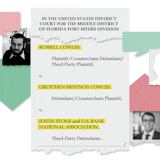That the Department of Natural Resources (DNR) could have been joking when it recently issued possible changes to state duck hunting regulations seemed at first glance — and second and third glances — a possibility.
The state's duck hunting woes are well-known. Sightings of mallards and other fowl have been less frequent in recent decades than they were a half-century — or even a quarter-century — ago, the reason for which is straightforward: What isn't there can't be seen.
The DNR has acknowledged these duck declines, citing the state's widespread loss of wetland and other habitat, much of it caused by USDA farm programs that insufficiently promote conservation. Many shallow lakes, for example, that once were home to breeding and migratory ducks are now home to minnows, carp or both. Ditto many of the state's remaining wetlands, some of which are treated more like repositories for city and farmland runoff than incubators of aquatic vegetation and the invertebrates that ducks need to survive.
As a result, Minnesota waterfowlers have fled the sport in droves, or are hunting in other states and provinces. In the 1970s, the DNR licensed as many as 140,000 waterfowlers, a number that declined to just under 80,000 in 2019. Indeed, because, as the DNR itself has said, "no other state has the waterfowl production potential of Minnesota," the state for decades led the nation in the number of duck hunters it put in the field. Now, empty skies means empty blinds.
Sociological and demographic changes also are responsible for duck-hunter declines. Baby boomers are graying. Urbanization is rampant. Everyone is busy. Other factors include single-parent families, an emphasis on team sports among high schoolers and the nature of waterfowling as a sport: considerable equipment is required, as are calling, shooting and dog-training skills, and a willingness, oftentimes, to rise early and drive long distances.
So it is that Minnesota duck managers are confronted virtually simultaneously with multiple challenges.
Foremost is retention of duck hunters the state still has, a passionate group that in many cases considers waterfowling more a lifestyle than a pastime. Lofty but attainable, this goal can best be achieved if these hunters believe the DNR intends to retain, not reduce, the quality of waterfowling the state still offers.
At the same time, managers must continue to enhance and expand the state's wetland habitats, which ultimately will improve Minnesota duck hunting. And finally, attempts must continue to recruit new waterfowlers, thus ensuring long-term funding and political support.


